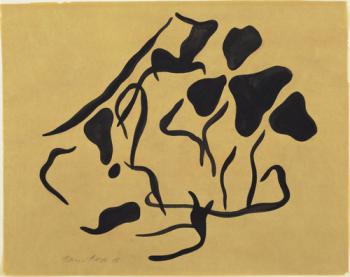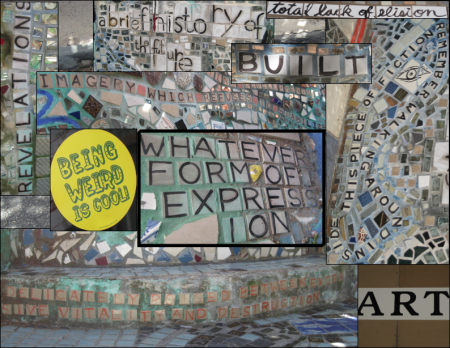Serendip is an independent site partnering with faculty at multiple colleges and universities around the world. Happy exploring!
mmanzone's blog

The Real UK
The real NW
Though seemingly realistic, Zadie Smith’s NW is loaded with inaccuracies in regards to the area and characteristics of locals that become apparent after an investigation.
While reading NW something didn’t ring true. The story did not feel real. Having never been to the area, however, I accepted the descriptions of all of the actual locations to be accurate. I accepted Willesden as an area where whites are the minority, everyone smokes and most people are from modest backgrounds, but these characterizations are inaccurate. According to a report on the public health of Brent County in London more than half of Willesden residents are white and about 70% of all people in London are as well (Willesden). This report goes on to show that “at least a fifth of the population… smokes” and in all of the separate sections of Willesden, for men and women, unemployment ranges from 3.4% to 7.4% which is about 50% higher than that of all of England; the report does not, however, indicate the actual socioeconomic statuses common in Willesden. Though just numbers, these statistics paint a much more detailed picture of the citizens of Willesden.

The Streets of NW
I have always wanted to live in England and found London to be one of the most interesting cities I've ever visited. Because of this what really caught my attention in NW was Zadie's vivid and detailed descriptions of the streets (like those on pages 42-43). I wondered how she wrote them. Did she walk down them and record what she saw? Was it all made up? I would like to look at the streets that she gives the most attention to and see what is really there and possibly what the socioeconomic makeup of the area is.

Midsemester Evaluation
When I was looking over the list of Emily Balch Seminars the first one that caught my attention was Play in the City. Not only because I was thinking about being a Cities major but also because I’ve always wished I knew Philadelphia better. This was going to be the perfect class: I’ll learn how to negotiate the city and how to write in college. Killing two birds with one stone (or class, as the case may be).
Much like cities all over the world our little Play in the City class welcomes people from everywhere. We have students from many states in the United States as well as some who have lived in Europe and China. There are students who have grown up in one place and some that have moved around their whole life. These varying backgrounds allow our group discussions to have more meaning as there are many different perspectives presented. We get to hear about how our adventures in the city compare to those had in cities all around the world.
“There were more people than back in China”
“I’m used to this. I grew up in D.C.”
“I was overwhelmed.”

Playing for Power
In my previous paper I discussed my adventures in Philadelphia (walking around Logan circle and wandering into the Academy of Natural Sciences) and how I acted in a way that exhibited “critical play” according to Mary Flanagan. Through reflection I eventually realized that what I was actually doing was part of Brian Sutton Smith’s concept of the four different types of play: play as learning, play as power, play as fantasy, and play as self (Flanagan 4). This past week I realized that, in many ways, teaching is a form of play as power.
For my venture into the city this past weekend I knew I wanted to go to Elfreth’s Alley, because I recognized the name from one of my classes and thought it would be fun to see the oldest continually inhabited street in America, and the Historic District of the city. I went with Kate and we spent awhile walking around the alley, deciding which houses we would live in if we could and embracing the historical feel of the alley. Despite how beautiful the walk in the alley was, we quickly found ourselves wanting to find something else to do. I remembered Kate expressing interest in the Constitution Center and I always find history interesting, so we made our way over to the main part of Old City.

National Parks
So what caught my attention was
Stop 1: Out of Time - U.S. Parks would close, drying up tourist cash flow
Stop 2: What exactly is gonna happen with the government shut down?
http://www.reuters.com/article/2013/09/30/us-usa-fiscal-factbox-idUSBRE98T0KO20130930
Stop 3: I love national parks!
Stop 4: So old city is basically closed?
http://philadelphia.about.com/od/history/tp/top_10_historic_philadelphia.htm
Stop 5: I remember Elfreth’s Alley being mentioned in my Urban Culture and Society class
Stop 6: http://www.elfrethsalley.org/visiting
$5 for a tour. I can swing that. And it's easy to get to with train/subway. I’m going to stop here.

Automatism
Automatism is a type of art that comes from completely random thoughts. It can be written, drawn or painted and just means that the art was done in a sort of "spur-of-the-moment" type of way. Some artists believe that just letting themselves create without any plan they can reach a new level of creativity. The name "automatism" was appropriated by surrealists from physiology and refers to actions and processes that are involuntary and not under concious control. "Action painting" is a type of automatism art that Jackson Pollock regularly used.
For more information go to: http://www.moma.org/collection/theme.php?theme_id=10947
 Automatic Drawing by Jean (Hans) Arp
Automatic Drawing by Jean (Hans) Arp

Playing to Learn
On my very first venture into Philadelphia with Play in the City to experience the Quiet Volume, I thought that Agatha, Phoenix, Thea and I were wandering aimlessly. But after reading Mary Flanagan’s writing about “critical play,” I realized that we were, indeed, playing critically. She references a paper by Brian Sutton-Smith, in which he categorizes play into four sections: play as learning, play as power, play as fantasy, and play as self. Though this is not entirely the concept Flanagan uses for her work, I found it incredibly interesting that what I think of as “play” might not be play to everyone and that though many people argue that something is not play if there is a product at the end, play nearly always has a product, albeit not a tangible one. When we were in Philadelphia we were playing to learn: to learn about the city, about science, and about ourselves.

Safe
Exploring the city with my little group was awesome and frequently hilarious. We were in a part of the city I had been to but never really had the chance just to see what there is (growing up in a suburb you go to Philadelphia for a day at the Franklin Institute, not for people-watching outside of a pizzeria). Walking around the Parkway and Logan Circle with Thea, Agatha, and Phoenix, I realized a lot of the city’s quirks I had never really thought about before.
Our first stop in Philadelphia was the Rodin sculpture garden where we saw quite a few beautiful pieces of art. The most striking thing for me, however, was how at home I felt. Walking around the garden, looking at the sculptures but focusing more on the plants, I remembered going to Longwood Gardens back in my hometown. I had never really thought I would find something in Philadelphia that reminded me so much of my little town but for the twenty minutes we were in the garden, I was back at home wandering around Longwood.



